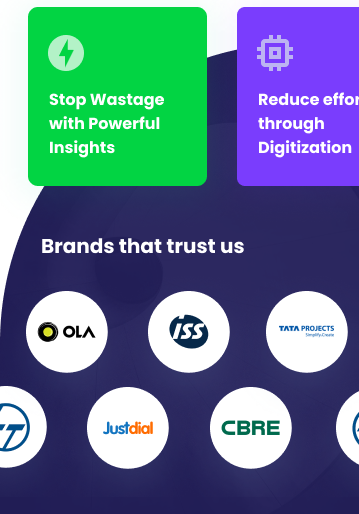Introduction
With rising global concerns about climate change and energy consumption, governments and regulatory bodies are enforcing strict energy efficiency regulations for commercial buildings. Facility managers and property owners must ensure compliance to avoid penalties, reduce operational costs, and contribute to sustainability initiatives. Building Management Systems (BMS) play a crucial role in achieving and maintaining compliance by automating energy efficiency measures, tracking real-time data, and generating compliance reports.
Understanding Energy Efficiency Regulations
Many countries have implemented stringent energy policies to promote sustainability in commercial buildings. Some of the key regulations include:
- LEED (Leadership in Energy and Environmental Design) – A global green building certification that recognizes energy-efficient buildings.
- ASHRAE Standards (American Society of Heating, Refrigerating and Air-Conditioning Engineers) – Guidelines for HVAC efficiency and energy performance.
- Energy Star Certification – A U.S. certification for energy-efficient buildings.
- ISO 50001 – An international standard for energy management systems.
- Building Energy Codes (BEC) – Local or national laws that mandate energy performance requirements.
Complying with these regulations requires continuous monitoring, documentation, and implementation of energy-saving strategies, which can be effectively managed using a BMS.
How BMS Helps Ensure Compliance with Energy Efficiency Regulations
1. Real-Time Energy Monitoring and Data Collection
Energy efficiency regulations require buildings to track and report energy usage over time. BMS provides real-time data insights into electricity, HVAC, and water consumption, helping facility managers optimize energy use.
How it Works:
- IoT sensors collect energy consumption data across all building systems.
- AI-powered analytics detect inefficiencies and suggest corrective actions.
- Cloud-based dashboards provide facility managers with compliance reports.
Compliance Benefits:
- Accurate data tracking for regulatory reporting.
- Meets ISO 50001 and Energy Star requirements for energy management.
- Helps reduce energy waste and meet sustainability targets.
2. Automated Energy Efficiency Optimization
Regulations like ASHRAE 90.1 require commercial buildings to implement HVAC and lighting efficiency measures. A BMS automates energy-saving processes to meet these standards without manual intervention.
How it Works:
- Smart HVAC controls adjust heating and cooling based on occupancy.
- Lighting automation reduces energy waste by using motion sensors and daylight harvesting.
- Peak load management shifts energy use to off-peak hours to reduce costs.
Compliance Benefits:
- Ensures adherence to ASHRAE and LEED standards.
- Reduces overall carbon footprint and energy costs.
- Prevents non-compliance penalties by automating energy optimization.
3. Predictive Maintenance for Energy-Efficient Equipment
Many regulations require buildings to maintain HVAC, electrical, and water systems at peak efficiency. A BMS enables predictive maintenance, preventing equipment failures that could result in excessive energy consumption.
How it Works:
- AI-based fault detection identifies issues before they escalate.
- Automated alerts notify facility managers of inefficiencies.
- Performance tracking ensures that equipment meets efficiency benchmarks.
Compliance Benefits:
- Prolongs equipment lifespan and prevents unnecessary replacements.
- Reduces operational downtime, ensuring consistent energy performance.
- Aligns with ISO 50001’s requirement for continuous energy improvement.
4. Automated Compliance Reporting and Audits
Energy laws and certifications require buildings to submit detailed energy consumption reports. A BMS simplifies regulatory reporting by automatically generating real-time energy usage reports.
How it Works:
- Automated data logging eliminates manual record-keeping errors.
- Customizable compliance reports meet specific regulatory requirements.
- Integration with third-party certification bodies streamlines audit processes.
Compliance Benefits:
- Saves time and effort in energy audits and regulatory submissions.
- Ensures full transparency with regulatory agencies.
- Helps achieve higher energy ratings, improving property value.
5. Integration with Renewable Energy Systems
To comply with net-zero emissions policies, buildings must integrate renewable energy sources like solar or wind power. A BMS optimizes renewable energy usage, ensuring maximum efficiency and compliance.
How it Works:
- Solar and wind energy monitoring ensures optimal utilization.
- Battery storage management balances grid energy and renewables.
- Demand-response automation aligns energy use with sustainability goals.
Compliance Benefits:
- Supports green building certifications like LEED and BREEAM.
- Helps businesses meet carbon neutrality and energy efficiency mandates.
- Reduces dependency on fossil fuels, promoting long-term sustainability.
The Future of Energy Compliance with BMS
With advancements in AI, IoT, and cloud technology, BMS will continue to enhance compliance strategies through:
- AI-driven compliance recommendations for energy optimization.
- Blockchain-based energy tracking for secure and transparent audits.
- Integration with smart grids for real-time regulatory adjustments.
Final Thoughts
Navigating energy efficiency regulations can be complex, but a cloud-based BMS simplifies compliance by automating energy tracking, optimizing system performance, and generating audit-ready reports. Investing in a smart BMS like Know Your Building ensures that commercial buildings remain compliant, cost-efficient, and sustainable.
Looking for a BMS solution to ensure energy compliance? Contact Know Your Building today for a free consultation and start optimizing your energy efficiency!














